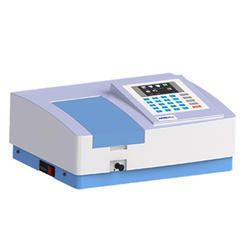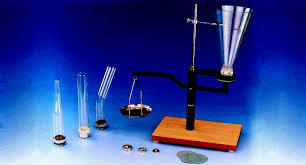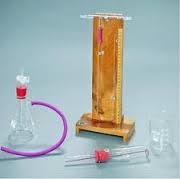Single Beam UV-VIS Spectrophotometers
Price 80000 INR/ Piece
Single Beam UV-VIS Spectrophotometers Specification
- Capacity
- 1 Kg/hr
- Dimension (L*W*H)
- 16*8*6 Inch (in)
- Material
- Iron & Bakelite
- Weight
- 2500 Kilograms (kg)
- Color
- White
- Usage
- For Laboratory
- Equipment Materials
- Iron & Bakelite
- Temperature Range
- 10-40 0C Celsius (oC)
- Display Type
- spectrum display
Single Beam UV-VIS Spectrophotometers Trade Information
- Minimum Order Quantity
- 1 Piece
- FOB Port
- Ambala Cantt
- Payment Terms
- Cash in Advance (CID)
- Supply Ability
- 1 Piece Per Week
- Delivery Time
- 1 Days
- Sample Policy
- Sample costs shipping and taxes has to be paid by the buyer
- Packaging Details
- Each Piece
- Main Export Market(s)
- Africa, Asia
- Main Domestic Market
- All India
- Certifications
- ISO 9001..2015/CE
About Single Beam UV-VIS Spectrophotometers
Single Beam Microprocessor UV-VIS Spectrophotometer Range 195 to 1000 nm with facility for automatic concentration, % Transmission, Absorbance & K factor measurements. Sample holder with 4 position selector control for 10 mm path length cuvettes. automatic wavelength calibration & wavelength scanning, automatic peak picking & spectrum display. Spectrum and data can be printed out by printer and sent to computer via USB port.Precision Spectrum Display for Reliable Analysis
The spectrum display enables users to view real-time data with clarity, ensuring high accuracy in experimental results. This visualization capability supports prompt decision-making and streamlines the process of data interpretation in research settings.
Robust Construction and Laboratory Suitability
Made from a combination of iron and bakelite, this spectrophotometer withstands the rigors of continuous laboratory use. Its solid build and 1 kg/hr capacity suit laboratories requiring consistent and reliable performance for sample analysis.
Adaptability Across Laboratory Environments
Operating reliably in temperatures from 10C to 40C, this equipment guarantees versatile applicability. Its compact dimensions facilitate ease of placement, optimizing workflow in laboratories of varying sizes and demands.
FAQs of Single Beam UV-VIS Spectrophotometers:
Q: How does the Single Beam UV-VIS Spectrophotometer benefit laboratory workflows?
A: The spectrophotometer offers rapid and precise spectrum analysis, streamlining sample processing and improving the consistency of experimental outcomes. Its spectrum display aids in quick data assessment, saving time in busy lab environments.Q: What is the suitable operating temperature range for this spectrophotometer?
A: This spectrophotometer is designed to function reliably within a temperature range of 10 to 40 degrees Celsius, accommodating the typical conditions found in most laboratory settings.Q: When should the spectrophotometer be calibrated for optimal results?
A: It is recommended to calibrate the instrument before starting a new series of analyses or whenever there is a noticeable deviation in results. Routine calibration maintains accuracy and ensures data reliability.Q: Where is the best location to install the spectrophotometer in the laboratory?
A: Position the spectrophotometer on a stable, level surface in a well-ventilated area, away from direct sunlight and sources of vibration. The devices dimensions (16x8x6 inches) make it adaptable to most laboratory benches.Q: What materials are used in the construction of this spectrophotometer?
A: The main components are crafted from iron and bakelite, providing the device with durability and resistance to chemical exposure commonly encountered in laboratories.Q: What is the process for using this spectrophotometer for laboratory measurements?
A: Start by calibrating the instrument according to the manufacturers instructions, then place your sample in the spectrophotometers cuvette holder. Use the spectrum display to monitor and record absorbance or transmittance data for your analysis.Q: How much sample can be processed using this spectrophotometer?
A: The equipment is designed with a capacity of 1 kilogram per hour, making it suitable for labs with moderate to high throughput requirements.

Price:
- 50
- 100
- 200
- 250
- 500
- 1000+
More Products in Physics Lab Instruments Category
LDR CHARACTERISTICS APPARATUS
Price 3450 INR / Piece
Minimum Order Quantity : 1 Piece
Weight : Approx. 2 to 3 kg
Dimension (L*W*H) : Approx. 32 cm x 16 cm x 12 cm
Usage : Establishing and Studying the Characteristics of LDR (Light Dependent Resistor)
Display Type : Analog & Digital Measurement Meters
PASCAL LAW APPARATUS
Price 3400 INR / Piece
Minimum Order Quantity : 1 , , Piece
Weight : Approx. 2.5 kg
Dimension (L*W*H) : Approx. 50 cm x 15 cm x 30 cm
Usage : Demonstration of Pascals law; Physics laboratory experiments
Display Type : Analog scale (liquid levels observed directly, no digital display)
Jaegars Surface Tension Apparatus
Price 2650 INR / Piece
Minimum Order Quantity : 1 , , Piece
Weight : Approximately 23 kg (varies with accessories)
Dimension (L*W*H) : Approx. 250 mm x 150 mm x 400 mm
Usage : Measurement of surface tension of liquids in laboratories
Display Type : Manual (graduated scale reading)
Universal Force Table
Price 15000 INR / Piece
Minimum Order Quantity : 1 Piece
Weight : 500 Kilograms (kg)
Dimension (L*W*H) : 6*7*4 Centimeter (cm)
Usage : For Laboratory
Display Type : Analog
 |
ESEL INTERNATIONAL
All Rights Reserved.(Terms of Use) Developed and Managed by Infocom Network Private Limited. |

 Send Inquiry
Send Inquiry




